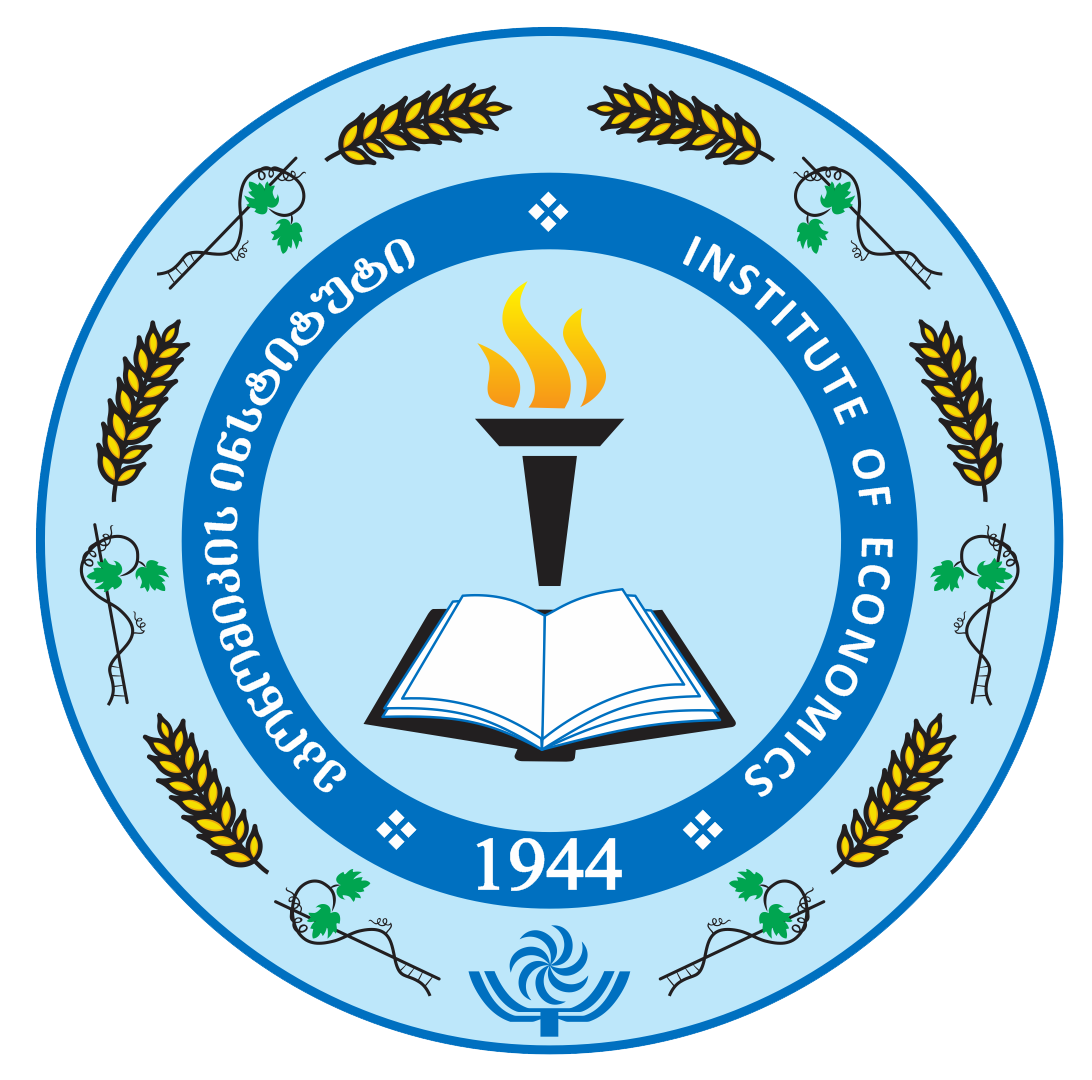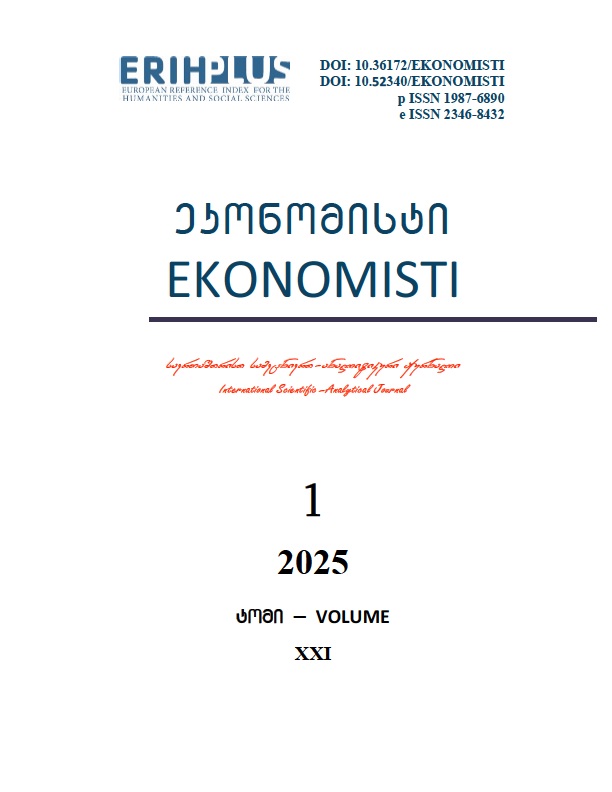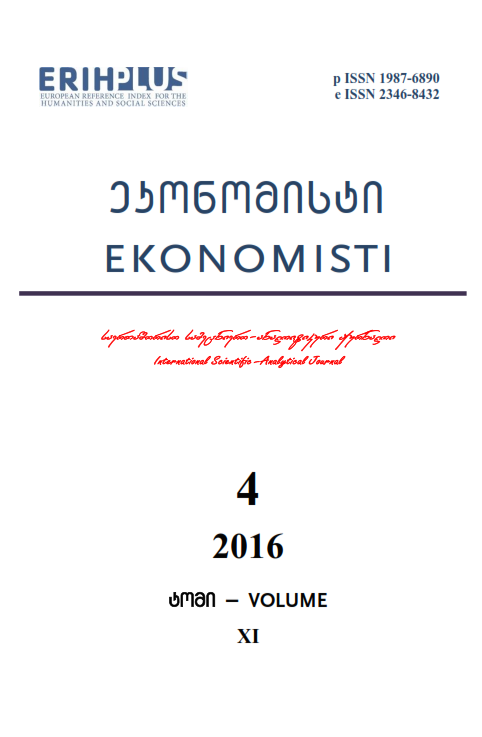
The international scientific and analytical, reviewed, printing and electronic journal of Paata Gugushvili Institute of Economics of Ivane Javakhishvili Tbilisi State University

Anti-inflationary policy of the central banks of the leading countries and the threat of a global recession
DOI kodi: 10.36172/EKONOMISTI.2022.XVIII.04.Chikobava.Kakulia.Lazarashvili
Expanded Summary
Back in the early autumn of 2021, most analysts and experts were confident that the next 2022 would be better than the previous one. But in the last quarter of 2021, unexpectedly for many, the International Monetary Fund and the World Bank made downward adjustments to the estimate of global GDP growth for 2022. The fact is that the decision of the US Federal Reserve System, which was made in November-December 2021, came as a shock to many. On November 3, 2021, the Federal Reserve announced that it was ending its quantitative easing program and on December 15 announced that it would double the rate of contraction. For financial market participants and businesses, this decision was a very serious signal to raise expectations of another serious wave of the global economic downturn.
At a press conference following the decision to raise the base rate in March this year, Jerome Powell said that the US central bank would do everything to bring annual inflation down to 2%. According to him, the US Federal Reserve is not considering raising the base rate by 75 basis points. However, the opposite happened: the Fed raised the federal funds rate by 75 basis points four times in a row, and so far annual inflation of more than 8% has not been able to do anything, let alone reduce it to 2-3%.
Over the past half century, the US economy has experienced several crises. The latest of these crises is the 2008-2009 crisis. It was then that the "printing machine" of the US Federal Reserve System was set in motion at extremely high speed, to justify which the term "quantitative easing" was coined.
If at the end of 2007 the assets of the Federal Reserve System amounted to a little over $800 billion, then by October 2014 (when the third “quantitative easing” program ended), they had already reached $4.5 trillion. The expansion of the money supply was carried out mainly through the purchase of Treasury and mortgage-backed securities in the stock markets by the Federal Reserve.
In seven years, the money supply created by the "printing machine" of the Federal Reserve has grown almost fivefold. And this at a time when the mass of goods produced by the US economy has increased by only 20% during this time. According to all the laws of economic science, unbridled inflation, or at least hyperinflation, should have begun. And this did not happen for the simple reason that all the production of the typewriter went to the stock markets, which inflated the “bubbles” of stock indices. The latter periodically exploded, which caused strong fluctuations in the American economy.
“Quantitative easing” entailed another dangerous risk: the astronomical amount of “greenbacks” in the US and world markets contained the danger that one day the dollar could depreciate sharply and lose its status as a world currency. Consequently, the shareholders of the Federal Reserve will lose their power over the American and global economies.
Since the end of 2014, the Federal Reserve has been trying to reduce the money supply. It went really bad. By the end of 2019, it was possible to reduce the assets of the US Federal Reserve System to only $3.9 trillion. By March 2020, the so-called. "COVID-19 pandemic". In the same month, the Fed announced the start of a new round of quantitative easing. By November 2021, Federal Reserve assets reached $8.7 trillion. That is, in just two years it has increased by 2.2 times.
By the way, since the beginning of the “pandemic”, many central banks have been acting like the Federal Reserve System, i.e. expand their own production of "typewriters". The assets of all central banks in the world increased from $30.5 trillion to $41.9 trillion from the end of 2019 to the end of 2020 (i.e. by 37%) (Norrestad, 2021). By 2021, the total assets of all central banks will reach $45 trillion.
Of course, central banks that issue reserve currencies, such as the European Central Bank, the Bank of Japan, the Bank of England, the People's Bank of China, the Swiss National Bank and others, have shown the greatest issuing activity. For example, the European Central Bank doubled its assets in about two years of the “pandemic”, reaching 8.7 trillion euros in November. The total assets of four central banks - the US Federal Reserve, the European Central Bank, the People's Bank of China and the Bank of Japan - reached about $31 trillion by the end of 2021, and at the beginning of 2020 their volume reached $20. trillion
Analysts and experts tried to guess how long the leading central banks will be able to continue such a policy of "quantitative easing". There are several versions of the alternative currency system, which we will not discuss now. We only note that the experts named such options as the revival of the gold standard in one form or another, the replacement of "old" dollars with "new" ones, the creation of a supranational monetary unit, etc.
At the beginning of this year, a sharp tightening of monetary policy began, which was caused by provoking global inflation. Despite the tightening of monetary policy by the central banks of the leading countries, inflation is still far from the target level (2-3% per year) (see Table 1).
Table 1
Annual Inflation Rates In The Leading Countries Of The World
(as of October 2022)
|
Countries |
Inflation rate (%) |
|
USA |
8,2 |
|
United Kingdom |
11,1 |
|
Germany |
10,4 |
|
France |
6,5 |
|
Italy |
11,8 |
|
Spain |
9,5 |
|
European Union |
11,5 |
|
Japan |
3,7 |
Source: https://tradingeconomics.com/country-list/inflation-rate?continent=world
According to experts, these decisions mean that the global economic crisis will break out in the near future. If we take into account the accumulated imbalances in the world economy, first of all, the total world debt, which, according to the International Financial Institute, exceeds $300 trillion, the crisis will be very unusual. In terms of its devastating consequences, it will surpass all post-war crises and will probably surpass the most severe world crisis in the history of capitalism - the so-called "The Great Depression".
The annual inflation rate in the United States, despite the tightening of monetary policy, has been significantly exceeding the target (2-3%) for several months now. In 2022, the monthly price inflation rate in the US will look like this (see Fig. 2): January - 7.5%; February - 7.9%; March - 8.5%; April - 8.3%; May - 8.6%; June - 9.1% (at the end of June, inflation reached a new high over the past 40 years. This is the highest rate since December 1981); July - 8.5%; August - 8.3%; September - 8.2%; October - 7.7%.
President Joe Biden and US Federal Reserve Chairman Jerome Powell believe that the two main economic threats to America are recession and inflation. But while recession still looms dimly on the horizon, inflation is a daily reality for millions of Americans.
Therefore, Jerome Powell and the Federal Reserve under him chose a course of tightening monetary policy - a tried and true means of combating inflation. So far, with some pauses, the Federal Reserve has been easing monetary policy since 2008. First of all, this was manifested in a gradual decrease in the key interest rate, which was reduced to almost zero. Secondly, the money supply has increased; It was carried out by the American central bank in the financial market through the purchase of Treasury bonds and mortgage-backed securities. As a result of this policy (called quantitative easing), US Fed assets rose from $0.8 trillion at the end of 2007 to $8.9 trillion by early 2022. In a word, there was an 11-fold increase. Therefore, the mass of the dollar increased by almost the same amount.
In the period from the beginning of 2020 to the beginning of 2022, the key rate of the Central Bank of America was at the plinth level: it was 0-0.25%. And since February 2022, the US Federal Reserve has revived sharply. Jerome Powell, always cautious in his words, suddenly dared. He said without half-hints and ambiguity: the Federal Reserve System chooses a course to tighten monetary policy and will carry it out to the extent necessary to eliminate inflation (more precisely, to reduce its level to 2-3 percent).
On February 16, the Federal Open Market Committee (FOMC) raised the key interest rate by 0.25 percentage points (25 basis points) to 0.25-0.5%.
The next step was made on May 4, when the key rate was raised by two standard steps: (ie. by 50 basis points) to 0.75-1%.
Another step was taken on June 16. This step caused a great resonance both in the USA and abroad. The Fed raised the key rate by three "steps" (75 basis points) at once, and it amounted to 1.5-1.75%. The last such three-step jump was implemented by the Federal Reserve System in 1994. On July 27, the Federal Open Market Committee made another step toward raising the key rate. He once again raised the key rate to three "steps" — 2.25-2.50%. This was followed by an increase in the federal funds rate to 3.25% in September, and on November 11 it was increased to 4%. In other words, the Federal Reserve System for the first time in 109 years of its existence has carried out four successive rate increases of 75 basis points!
The increase in the key rate is accompanied by a movement towards "quantitative tightening". The latter includes the sale of the Federal Reserve System from his own portfolio of those treasury and mortgage securities that he has accumulated over the years. Monthly sales of treasury bonds worth 30 billion dollars and mortgage-backed securities worth 17.5 billion dollars took place during the summer. In September, the volume of bond sales will double to 60 billion US dollars in the form of treasury bonds and 35 billion US dollars in the form of mortgage-backed securities.
Analysts are asking questions: how strong is the US economy, can it withstand the anti-inflationary drug called "monetary tightening"? By most estimates, monetary tightening is highly likely to trigger a much deeper and more damaging global recession than the 2008-2009 crisis.
Key Terms: Federal Reserve, quantitative easing, federal funds rate, key rate, global inflation, quantitative tightening, mortgage-backed securities, derivatives, global recession.

